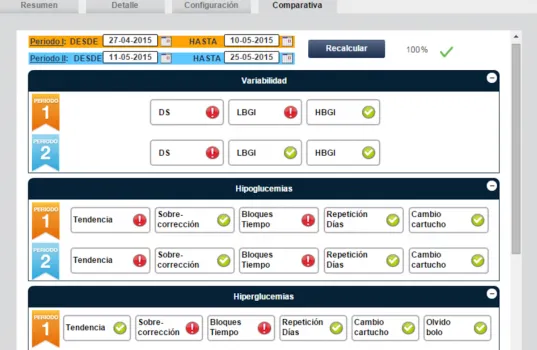The correct approach to diabetes and the improvement of care quality are, at present, the main challenges in the control of this disease.This has been found at the XXVII National Congress of the Spanish Diabetes Society (SED), which is closed tomorrow in Bilbao.
During the meeting, the results of the Emminens Edetecta evaluation have been presented, a new solution developed by Emminens Healthcare Services, Roche Diabetes Care Spain company, which facilitates control of diabetic patients.
Aimed at health professionals, the new Emminens Edetecta module, thanks to the automatic data analysis it provides.
The poster summarizes the results of a transverse, international and multicenter study of randomized cases through a web platform in which 37 endocrine referents of hospitals in Spain and Portugal have participated.
In the evaluation the professionals took an average of 15 minutes to detect the patterns of the data download reports evaluated and that Edetecta, meanwhile, performed in less than a minute.
Among the main conclusions presented in the poster, the help of Edetecta in the data download analysis, facilitating the detection of patterns in less time -inferior to a minute -in a safe and automatic way.
Lars Kalfhaus, general director of Emminens Healthcare Services, highlights that, “thanks this evaluation we have proven that the automatic data analysis provided by Edetecta reduces the time dedicated to the analysis of glycemia readings and patterns detection by 90%.Thanks to this, the medical team can use more time in consultation with motivation, therapeutic education and interaction with the patient. ”
Individualized Patterns Control
The new module detects patterns, both clinical and behavior, which the healthcare professional can configure to a patient or group of patients, according to 5 criteria: variability, hypoglycemia, hyperglycemia, use of the device and adherence to treatment.
By having algorithms configurable per patient, maximum customization and individualization in treatment is guaranteed, in the possibility of checking at all times how his patient is, which, in Kalfhaus's words, “allows better control of the evolution of the evolution ofThe disease and, in the case of detecting mismatches, calling the patient to go to the consultation or communicate how to solve them, thus avoiding urgency complications and visits. ”
Another key points is the possibility of comparing two selected periods to visualize changes, quickly measure their impact and facilitate the necessary therapeutic adjustments.One more step in the integral and personalized management of diabetes.


